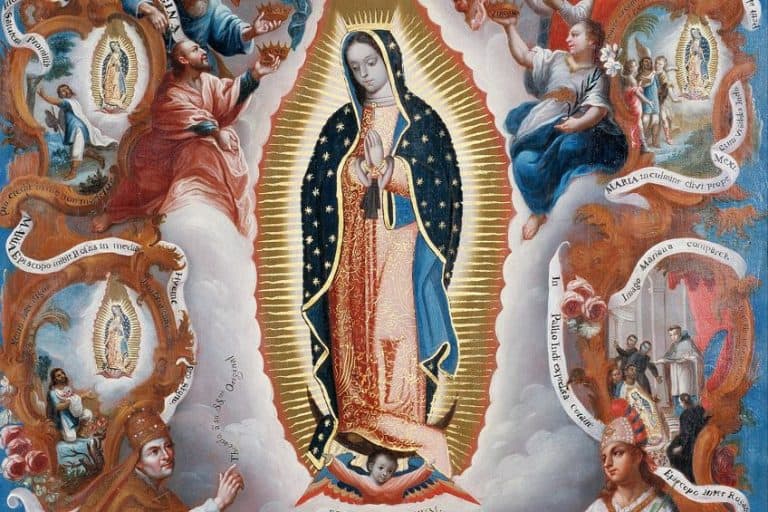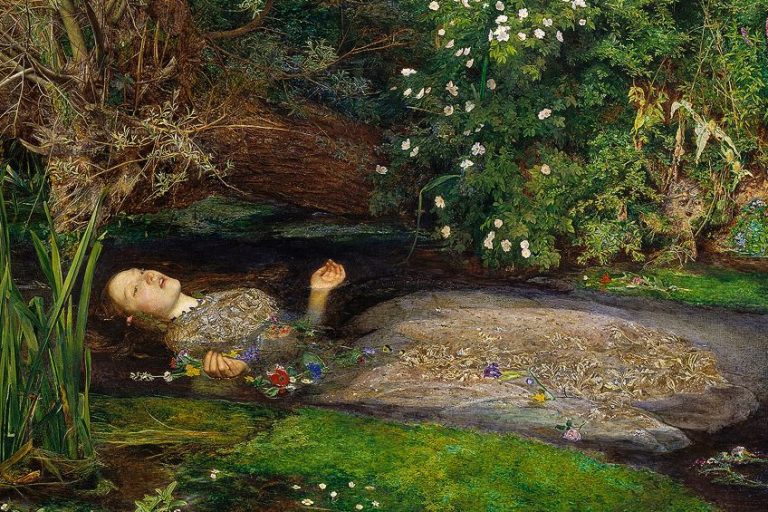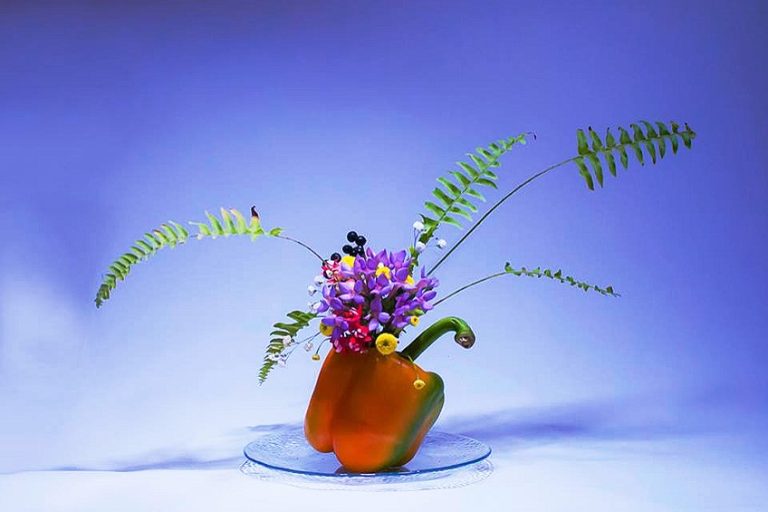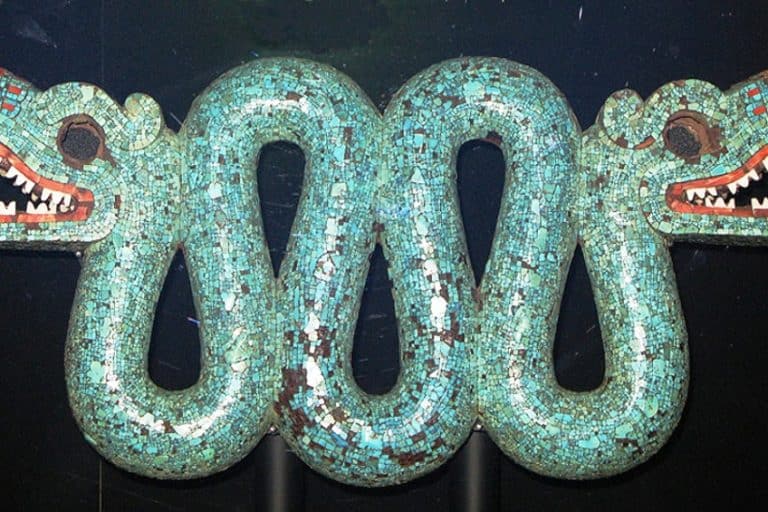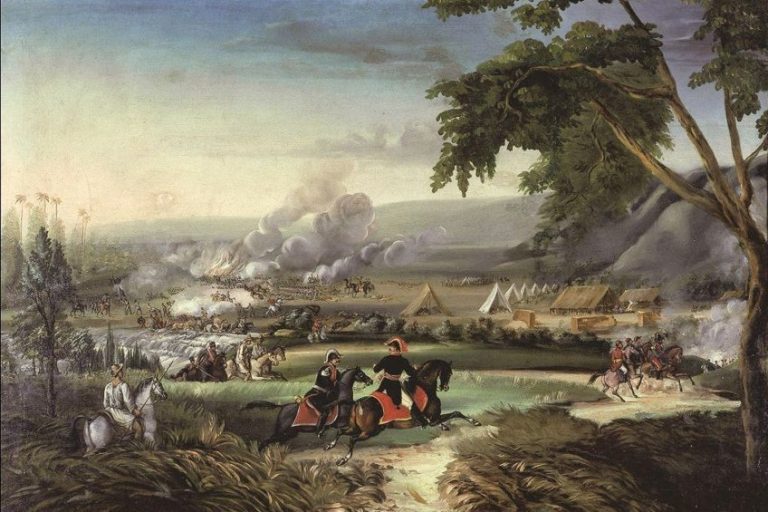Constructivism Art Movement: A Revolutionary Approach to Art
Constructivism is perhaps one of the most influential artistic and social movements of the 20th century. Nothing short of a war on our very conception and understanding of art, Constructivism first emerged during the Russian Revolution in the early 20th century. With a focus on practicality and modern life, Constructivist art dismantled the status quo and attempted to build towards a communist society.
A Brief Introduction to the Key Ideas in Constructivist Art
Constructivism is essentially anti-art. Constructivism art was against the frills and fancies of elite artworks that were typically ornate and infused with rich Christian Orthodoxy. The Constructivist manifesto was written in 1922 by Aleksei Gan, a Russian artist. The opening line of the manifesto declared: “UNCOMPROMISING WAR ON ART”. Five years earlier, in 1917, the Russian Revolution had taken place, and the Russian people were disentangling themselves from the shackles of the ruling elite.
During Russia’s post-Revolution transition, artists found their role in creating practical and industrial art to support the new Soviet state. In Constructivism, art was no longer for hedonistic pleasure but served a purpose within a fresh Communist society. Constructivist art began as a guiding light for the Russian people, carrying the hopes of many for a better life. Taking inspiration from Futurism, Suprematism, and Cubism, Constructivism sought to make the transition from artistic composition to construction.
Constructivist art reflected and attempted to impact the ever-changing industrial world. Art in the Constructivist era reflected the gritty machinery and technological progression of the early 20th Century.
In Constructivism, artistic objects serve practical purposes rather than express beauty or subjective experiences. “Truth to materials” was a fundamental concept within Constructivism and translated into using materials only within their capacities. How materials behaved was a key focus of Constructivist artists who let the materials dictate the form of their art.
For some, the goal behind this new method of artistic creation was a new modern way of expressing the dynamism of life in the modern, industrial world. For others, the aim was more practical, intending to find new ways of using materials for building and mass production. Constructivist artists saw themselves as the makers of the modern Communist Russian society.
Constructivist art has a fondness for geometric forms, sparse composition, and industrial materials. Rulers and compasses could create simple forms, reflecting the decomposition of art and challenging established traditions. Constructivist artists used glass, wood, and metal in their constructions.
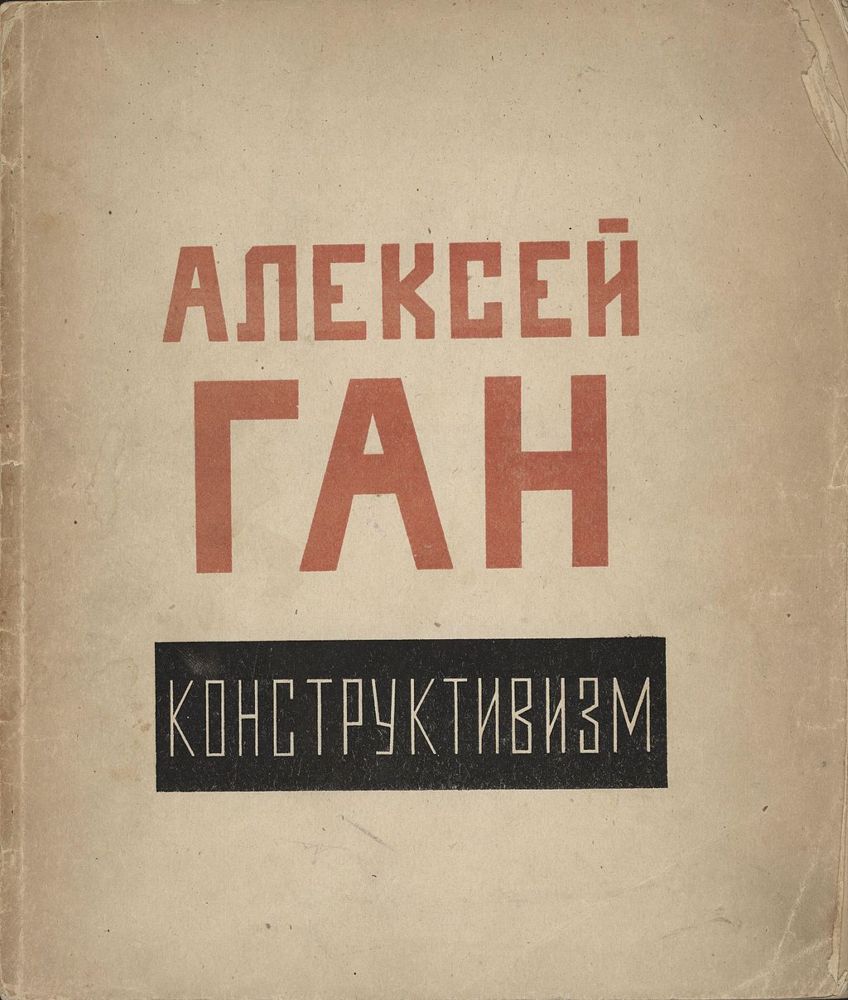
Paving the Way to Revolution: How Constructivism Influenced the Russian Revolution
The leaders of the Russian Revolution sought not only to overhaul the country’s economic system but to revolutionize Russian cultural life too. In 1922, the same year that Aleksei Gan wrote the Constructivist manifesto, the Soviet Union was born. Vladimir Tatlin, the father of the Constructivism art movement, and other founding Constructivist artists like Alexander Rodchenko and Aleksei Gan, were all proponents of the Communist regime.
In attempts to overhaul every aspect of modern Russian life, the Constructivists tackled fashion, architecture, cinema, design, and mass-produced objects. Constructivist artists were heavily political, and the post-Revolution propaganda is distinctly Constructivist.
Posters with messages of propaganda like Beat the Whites with the Red Wedge (1919) by El Lissitzky were typical during the civil war. During the years of the civil Revolution, Constructivism shared a great deal with Proletkult, an artistic institution with a focus on completely overhauling Russian culture.
The Role of Constructivism in the Creation of a Communist Russian Society
The political and cultural activity of Constructivist artists did not cease after the Revolution. Key artists like Tatlin and Rodchenko continued to support the Communist system through their art. The principal concerns of these Constructivist artists were pragmatic, but the intent to shift Russian cultural values also continued. Constructivists supported the Communist regime in many ways, from the production and marketing of mass-produced objects to challenging the norms in theater and cinema.
Agitprop
A combination of ‘agitation’ and ‘propaganda,’ agitprop was a phenomenon among Constructivism artists that used design to further political, cultural, and artistic goals during the Revolution period. Constructionism artists including Rodchenko, Vladimir Lebedev, Vladimir Mayakovsky, and Valentina Kulagina were involved in the creation of ROSTA Windows.
Between 1919 and 1922, over 1,500 propaganda posters were published by the Russian Telegraph Agency (ROSTA). Artists used photomontage techniques to create these posters and then stuck them in empty windows. The bright and bold forms of these posters clearly communicated the political and social concerns of the revolution. These posters were also successful in mobilizing the workers, particularly women.

Productivism: Proponents for Productivity
Creating practical and industrial art was a key part of the Constructivism art movement. Productive contribution to the economy was integral to Constructivist artists in Russia during the transition to Communism. Between 1920 and 1924, there was a consistent debate about the purpose and form of art in the new Russia.
This debate centered around a design by Tatlin called Monument to the Third International. Tatlin’s tower monument was a celebration of technological development. The design combined searchlights and other dynamic components with a machine aesthetic. Many, including Naum Gabo, were critical of Tatlin’s design because it combined an artistic aesthetic with function.
Gabo and Nikolaus Pevsner had caused controversy in 1920 with their “Realistic Manifesto” advancing Constructivism with a spiritual essence. Tatlin and Rodchenko held opposite conceptions of utilitarian Constructivism.
Tatlin’s tower captured the imagination of German artists, who hailed it as an artistic revolution. Following Tatlin’s tower, there was an extended exchange of artistic ideas between Berlin and Moscow. Strengthened by Veshch-Gegenstand-Objet, a Soviet-German magazine created by Ilya Ehrenburg and El Lissitzky, this exchange spread the concept of Construction art.
In 1922, an exhibition of Constructivist art took place in Berlin at the Russische Ausstellung. In the same year, a Constructivist Internation formed and met with De Stijl and Dadaist artists in Germany. This Internation included artists like Hans Richter, Lissitzky, and Laszlo Moholy-Nagy, but was short-lived.
In Russia, the Institute of Artistic Culture existed from 1920 until 1924 and included graphic designers, painters, architects, scholars, and sculptors. Productivism was the outcome of a series of debates within the institute between 1920 and 1922. Productivism is the view that the purpose of human organization or work was measurable by growth or productivity. The logic followed that greater productivity was the ideal.
The birth of Productivism through Constructivism necessitated the direct participation of artists in industrial work and put an end to easel painting. With his furniture designs, worker’s overalls, and an economical stove, Tatlin was among the first Constructivist artists to transfer his artistic skills to industrial production.
Despite its flourishing in the Constructivist movement, many have criticized Productivism. Increased production is not essentially good when having children, making greenhouse gases, and using limited resources as a result of the limits posed by a restricted planet.

Constructivism and Communist Consumerism
While consumerism may go against the grain of a Communist Constructivist movement, several artists worked in advertising. The Soviet Union established the New Economic Policy in 1921, creating more opportunities in the market. Several Constructivists, including Varvara Stepanova and Rodchenko, created advertisements for co-operatives that had to compete with established businesses.
Rodchenko and Mayakovsky worked together to make eye-catching illustrations with bold letters, geometric shapes, and bright colors. Together, they called themselves advertising constructors, and they produced adverts for daily goods like beer, pacifiers, and cooking oil from Mosselprom, a state-owned department store. As with all advertisements, the artists intended the bright colors to elicit an emotional reaction.
Other artists, including Stepanova and Lyubov Popova, attempted to design Constructivist clothing with varying success. It is surprising how willing these artists were to balance their Communist beliefs with the consumerist requirements.
The Construction of Culture
While the Constructivists were politically active and heavily involved in commerce during the transition to the Soviet Union, they also tackled the cultural arena. Cultural elements of Soviet society like photography, cinema, graphic design, and architecture all received Constructivist make-overs during the early 20th century.
Cinema as a Medium for Cultural Change
In the 1920s, the Soviet Constructivists founded the Left Front of the Arts, an organization that published the LEF journal. The LEF journal attempted to guard against the possibility of a restoration of the capitalist system and maintaining the Avante-Garde in the face of criticism from Socialist Realism.
Parts of the Communist party were attempting to revive traditional narratives and easel painting, and Constructivists of the LEF began to focus on cinema as the new medium for cultural change. Mayakovsky was an actor in The Young Lady and the Hooligan (1919), and Rodchenko designed animated sequences and intertitles for Kino Eye (1924), a film by Dziga Vertov. The set and costumes for Aelita (1924), a science fiction film, were designed by Aleksandra Ekster.
Storm over Asia (1928) by Vsevolod Pudovkins and Turksib (1929)by Victor Turin featured intertitles and screenplays by Productivist theorist Sergei Tretyakov and Osin Brik. Fast-cut montages are characteristic of Constructivist filmmaking. This style of filmmaking is typical of documentarist Esfir Shub and LEF contributors Sergei Eisenstein and Dziga Vertov.
Combining a love of the American age of jazz and similar Avante-Garde intentions, Leonid Trauberg and Grigori Kozintsey were proponents of eccentrist films. Early Soviet cinema is distinguishably by the abstraction and montages used to create an agitating effect.
Constructivist cinema and art had similarities to the Russian Formalists in their use of ‘making strange’, as well as their attempts to make the viewer active in their interaction with the artwork. Viktor Shklovsky, the primary Russian Formalist theorist, worked closely alongside the Constructivists. Theater was the mainstage for testing these artistic theories.
‘October in the Theater’ was established by Vsevolod Meyerhold, making use of new biomechanical acting. Frederick Winslow Taylor’s theory of scientific management and the circus were inspirations for this acting style. Artists like Popova, Vesnin, and Stepanova investigated Constructivist spatial planning with their stage set designs.
Alexander Tairoy appealed to the public using stage sets designed by the Stenberg brothers and Aleksandra Ekster. Ideas like these were influential within early Soviet Cinema and inspired German directors like Erwin Piscator and Bertolt Brecht.
Constructivist Graphic Design
Radical designers in the West, Jan Tshichold in particular, took a great deal of inspiration from the book designs of Russian Constructivism artists like El Lissitzky, Rodchenko, Anton Lavinsky, and Solomon Telingater. Constructivist artists designed the graphics for posters for almost everything. Political propaganda posters frequently used the agitational photomontage designs of Valentina Kulagina and Gustav Klutsis. Posters for the cinema often featured the bright and geometric designs of the Stenberg brothers.
Towards the end of the 1920s, a new form of Constructivism emerged in Cologne. The Cologne Progressives, a group with links to members of Russian Constructivism like Lissitzky, founded Figurative Constructivism. The Vienna Method of typographic picture education emerged from the collaboration between the Cologne Progressives and Russian Constructivists. The principal theorist of this group, Franz Seiwert, published a journal in this style called A bis Z.
Leon Trotsky was an early political patron of the Constructivists. Following the expulsion of the Left Opposition and Trotsky in 1928, this support began to seem suspicious. Realist art began to be favored by the Communist party as the 1920s progressed, but it was not until 1934 that Socialist Realism took the place of Constructivism. Despite this, Constructivists like Rodchenko, Lissitzky, and Stepanova continued to produce Avante-Garde designs for the state.

Constructing Photomontages
Russian Constructivism artists were involved early on in the development of photomontage techniques. Gustav Klutsis produced several works using these photomontage techniques, including Dynamic City (1919-1920).The Constructivist method of montage was similar to that of Dadaist methods in how it collaged together painted sections and newspaper photographs. Compared to the Dadaists, however, Constructivist montages were less destructive. Rodchenko’s illustration of Mayakovsky’s poem, About This, is perhaps the most famous example of Constructivist montages.
The LEF popularized another distinctive style of Constructivist photography that shared several characteristics with the fledgling documentary movement. This photography style reflected Laszlo Moholy-Nagy’s work with abstract lighting, high contrasts, and jagged angles. Max Penson and Boris Ignatovich were proponents of this style alongside Rodchenko and others.
The Architecture of the Constructivists
Constructivist architecture emerged from the wider art movement following the Russian Revolution in 1917. The architecture was central to the Constructivist ideology. Artists began to turn their attention to meeting the industrial and social demands of the new Socialist system.
There are two clear streams of architectural design that emerged within the Constructivist movement. The first focused on rhythm and space within buildings and is captured in Gabo and Pevsner’s Realist Manifesto. The other stream encapsulated a scuffle between members of the Commissariat for Enlightenment. On one side, some argued for pure art, and on the other, Productivists like Rodchenko and Tatlin argued for art within industrial production.
In 1922, Gabo and Pevsner emigrated, and the movement followed the utilitarian designs of the Productivists. With support from LEF and the Proletkult, Productivism was a dominant influence for O.S.A, an architectural group directed by Moisei Ginzburg and Alexander Vesnin.
Influential Constructivists and Their Famous Works
To get a real flavor for the Constructivist movement, we are now going to look a little closer at the works of some of the most famous Russian Constructivism artists. Tatlin, Rodchenko, and El Lissintzky are among the most well-known artists in this period, and their works perfectly encapsulate the ideas and styles of the Soviet Constructivists.
Vladimir Tatlin: The Father of the Constructivism Movement (1885-1953)
During a visit to Picasso’s studio in 1913, Tatlin found the Spanish artist’s collage experiments inspirational. Two years later, Tatlin created his own three-dimensional abstract collages from wood and metal. During the throes of the Russian Revolution in 1917, Tatlin began plans for a monument to represent the massive shift in Russia’s social fabric. The design for Monument to the Third International, or Tatlin’s Tower, began to take shape in 1919.
Monument to the Third International
Although never built, Tatlin’s tower is perhaps his best-known work. The curvilinear wooden model spiraled upwards, and the tower featured dynamic elements like searchlights and projector screens. The tower was going to feature a spiraled steel frame that stood at 1,300 feet.
The Constructivist sculpture design also featured three shaped units, being a cone, a cylinder, and a cube, all of which were constructed from glass. These units would be spaces for meetings, and Tatlin planned for them to rotate once a day, month, and year, respectively.
Glass and steel were, for Tatlin, the essential materials for modern industrial construction. The materials represented the boom in industrial technologies of the machine age that so inspired the Constructivists. The continuously moving geometric units personified the dynamism of the modern world. Tatlin’s tower was a revolutionary monument intended to be a center for propaganda and functional conference space for the Third International global Communist organization.
Although it was never built, the tower’s design was fundamental to Constructivist architecture, sculpture, and graphic design. Tatlin’s tower remains an icon of utopian design and has been the inspiration for several films.
Corner Counter-Relief (1914)
In his early years of artistic development, Tatlin produced a series of Counter-Reliefs that bridge the gap between his Cubist influences and the spark of Constructivism. The Corner Counter-Relief conforms to neither sculpture nor painting, which is typical of Constructivist ideas about old fashioned artistic mediums.
This work sits in the room’s corner. Traditionally, religious icons sat in this position in pious Russian households; thus, the placement of this piece takes on a new significance. Modernity and industrial experimentation, suggests Tatlin, should be the new Russian gods.
Some believe that the idea for this series stems from the Technical Manifesto of Futurist Sculpture (1912), in which Umberto Boccioni, an Italian Futurist, calls for the splitting open of figures to place the environment within them. The Constructivist sculpture has a unique relationship to the environment around it because of its placement in the corner. Tatlin had experience in making musical instruments, and the diagonal wires that span this piece are evocative of this.
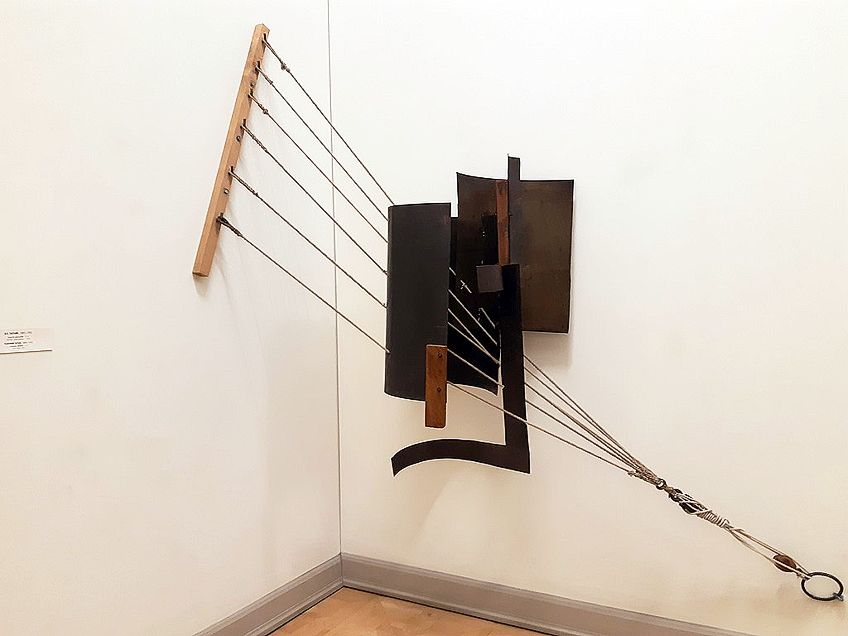
Alexander Rodchenko (1891-1956)
Rodchenko advocated for the integration of Avante-Garde art and everyday Soviet life. Identifiable by striking lines, bright colors, and bold geometric shapes, you can find Rodchenko’s stylistic designs on propaganda posters, hanging sculptures, and canvases.
Spatial Constructions (1918-1921)
In the typical Constructivist fashion, geometric shapes were a fundamental part of Rodchenko’s designs. This hanging sculpture is no exception. When suspended, the concentric geometric shapes transform from a motionless, two-dimensional piece to a dynamic sculpture that responds to the environment.
Sculptural experimentation like this transforms the viewer, inviting them to become active in their interaction with the piece and the environment. Rodchenko and other Constructivists intended this interaction with the masses to extend beyond the confines of exhibition space.
Books (Please)! In All Branches of Knowledge (1924)
Rodchenko was at the forefront of Constructivism graphic design, and this propaganda poster is emblematic of his distinct style. The iconic poster features a photograph of a woman crying out the title, framed by linear forms in red and black. The crisp geometric shapes extend out away from the center, creating a visual impression of the emanating cry.
Pure Red Color, Pure Yellow Color, Pure Blue Color (1921)
In a fashion typical of the Constructivist movement, this series of three painted canvases reduces artistic expression to little more than practical experimentation.
In this work, Rodchenko does not experiment with form or composition, instead, he reduces painting to a study of the character of color. Using the three primary colors, each on a separate canvas, Rodchenko affirms that this is the fundamental be-all and end-all of painting.
This piece does not attempt to transform the paint material into art, preferring, as is the Constructivist way, to use the material in the most practical, honest, and utilitarian way possible. Some interpret this painting as a rejection of the spiritual mysticism found in the works of Kazimir Malevich. There is no deeper meaning to the choice of colors other than pure practical utility.
El Lissintzky (1890-1941)
Lissitzky was a photographer, architect, designer, and artist foundational to movements within Russian Avante-Garde. The stylistic techniques and devices that Lissitzky developed have greatly influenced the graphic design of the 20th Century. Lissitzky was influential within the Constructivist movement, producing works of propaganda for the new Soviet regime.
Proun Room (1923)
In much the same way as Rodchenko’s Spatial Constructions, this sculptural installation intends to propel the viewer throughout the space. Lissitzky’s installation of dynamic and abstract geometric forms that appear to float makes the viewer an active participant in the piece. For Lissitzky, the radical transformation of the materials and space was a visual reflection of the fundamental shifts occurring in Russia’s social fabric.

Abstract Cabinet (1927-1928)
When one walks past this wall of vertical planks, their appearance shifts from dark to light. This piece epitomizes the Constructivist desire for active participation with functional works of art. As the viewer navigated the space, the character of the work would change. Unfortunately, this piece perished during the Second World War.
The Legacy of Constructivism: Beyond Russia
Consistent with the Constructivist desire to spread Communist ideologies throughout the world, Constructivism began to take hold in several countries following the First World War. Modern Latin American masters like Enrique Tabara, Carlos Catasse, Theo Constante, and many others found artistic inspiration in Constructivism.
Australian painter George Johnson and New Zealander Peter Nicholls both demonstrate Constructivist influences. During the 1930s and 1940s in England, Gabo instituted a form of Constructivism that influenced designers, artists, and architects alike.
As recently as the 1980s, we can see the influence of Constructivism graphic design in Neville Brody’s work. In the 1980s, The Designers Republic, an influential design company founded by Ian Anderson, used the principles of Constructivism.
Constructivist ideas touched all artistic disciplines, including film, theatre, music, sculpture, architecture, fashion, and poetry. During a time of mass social upheaval and uncertainty across the globe, Constructivism called for a complete reimagining of our world.
Suggested Reading for Deeper Insight
Constructivism flourished in a political and social environment of uncertainty. The deeper intricacies of the historical circumstances that facilitated the development of Constructivist ideas are vast. If you are interested in learning more about this unique and challenging art movement, we have two book suggestions.

The Struggle for Utopia: Rodchenko, Lissitzky, Moholy-Nagy, 1917- 1946
Based on the doctoral dissertation of Victor Margolin, this book is ideal for professional artists or those interested in the more complex elements of the Constructivist movement. The language is not heavy with jargon, but the topics explored are complex. The book is well organized and features a selection of photographs from the Russian Constructivist period from 1917 to 1946.
- One of the best books on geometric-absraction in Russia
- Analysing Russian and German constructivist art and design
- Focus on the key creative figures of Lissitsky, Rodchenko, and Moholy-Nagy
Rodchenko and Popova: Defining Constructivism
This comprehensive study of Rodchenko and Popova, two of the most influential artists of the Constructivist era, is written by Margarita Tupitsyn. Written to accompany a Tate Modern exhibition, this book catalogs over 200 different works by the two artists. The range of colorful illustrations highlights the versatility of these artists in various forms. The works covered in this book include posters, drawings, paintings, set designs, architectural projects, and textile designs.
- First book to give both female and male artists equal status
- Four sections examining the artists' production during certain periods
- Includes a wealth of new scholarship and previously unpublished works
Isabella studied at the University of Cape Town in South Africa and graduated with a Bachelor of Arts majoring in English Literature & Language and Psychology. Throughout her undergraduate years, she took Art History as an additional subject and absolutely loved it. Building on from her art history knowledge that began in high school, art has always been a particular area of fascination for her. From learning about artworks previously unknown to her, or sharpening her existing understanding of specific works, the ability to continue learning within this interesting sphere excites her greatly.
Her focal points of interest in art history encompass profiling specific artists and art movements, as it is these areas where she is able to really dig deep into the rich narrative of the art world. Additionally, she particularly enjoys exploring the different artistic styles of the 20th century, as well as the important impact that female artists have had on the development of art history.
Learn more about Isabella Meyer and the Art in Context Team.
Cite this Article
Isabella, Meyer, “Constructivism Art Movement: A Revolutionary Approach to Art.” Art in Context. January 22, 2021. URL: https://artincontext.org/constructivism-art/
Meyer, I. (2021, 22 January). Constructivism Art Movement: A Revolutionary Approach to Art. Art in Context. https://artincontext.org/constructivism-art/
Meyer, Isabella. “Constructivism Art Movement: A Revolutionary Approach to Art.” Art in Context, January 22, 2021. https://artincontext.org/constructivism-art/.





